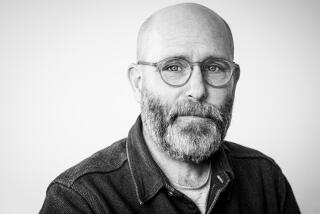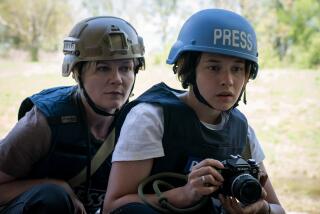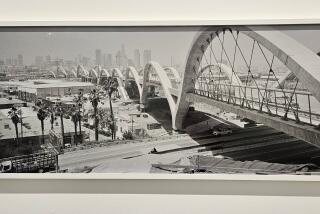His ‘Weapon’ of choice was a camera
Eddie Adams made me weep long before I knew his name.
With his camera he caught the faces of the Vietnam War: soldiers hardened too young, barefoot children with dead eyes, burned villages with smoke still hanging in the air, mothers collapsed around their dead. His photos seared the front pages of newspapers around the world, making the war painfully real.
The chilling execution of a handcuffed prisoner on a Saigon street caught in a split second just as the bullet slammed against the helpless man’s head is the one that would change Adams’ life and the war along with it.
Titled “Saigon Execution,” the 1968 photo would win him a Pulitzer, but over the years much more of Adams’ work would move, shock, uplift, unite and sadden us, as we discover in Susan Morgan Cooper’s love letter of a documentary, “An Unlikely Weapon.”
Just about everyone starts smiling as they talk about Adams, a sardonic old soul even in his early years. And Adams on camera doesn’t disappoint. He wears disdain like armor. His assessment of the Pulitzer photo? Badly composed, bad lighting.
He shrugs, he swears, he shakes his head in disgust. Yet you feel the caring behind the cursing, feeding into the photos he takes. What his contemporaries saw was an artist’s eye.
Cooper uses wide-ranging talks with Adams, other photographers, his family and a cadre of journalists on the ground with him during the war, including Peter Jennings and Tom Brokaw, to create a picture of a complex mind with a gift for capturing humanity and inhumanity with heartbreaking force.
We first encounter him walking down a New York street more than 30 years after Vietnam, wearing the black fedora that was his signature and talking about the meaning of a life’s work. “Nobody gives a damn, we’re all going to die, we’re disposable,” he says.
When war would wear him out -- he covered 13 of them -- he would come back to the States and shoot celebrities and presidents for magazines such as Time, Life, Parade and Penthouse.
As Adams talks, or narrator Kiefer Sutherland fills in the gaps, his photos fill the screen. It can feel like a family album, so familiar do they seem. President Ronald Reagan pumping iron, Mother Teresa on the streets of Calcutta, singer Marc Anthony caught midleap in a gritty alley.
Perhaps Adams’ self-deprecating cynicism helped pull his subjects outside their comfort zone, like the shot of Arnold Schwarzenegger in a pool as a rubber duck floats by. Or, ducks again, with Fidel Castro, where the two spent a night hunting and smoking cigars, with Adams getting impossibly candid photos.
Adams simply had the right instincts for the right shot. An aging Louis Armstrong collapsed in a chair backstage, trumpet resting on his lap, was a quiet eulogy for an artist who was already played out. It is the strength of photos such as these that help shore up the film in those times when Cooper struggles.
In time, Adams would find the celebrities wearing too and he would return to the front lines. In the post-Vietnam days of the boat people, he jumped into a tiny crowded craft being towed back out to sea, determined to tell their story. His photos were presented to Congress and credited with helping to trigger a decision to allow 250,000 Vietnamese refugees entry to the U.S.
When he says, “I didn’t mean to do it. . . I’m not a good guy,” you know not to believe him.
Though Adams wanted his images to have power, it didn’t always sit easily with him. He got to know the Vietnamese general who wielded the gun in that famous photo. The general had immigrated to New York and worked at a pizza joint. One day, Adams discovered graffiti scrawled on a wall where the general worked, calling him out for his Vietnam sins. It troubled Adams greatly and left him wondering whether his weapon of choice had also destroyed a life.
Lou Gehrig’s disease came late in life and overtook him quickly. He worked until he couldn’t and died in 2004 at 71. He kept the photos of a lifetime haphazardly packed in hundreds of boxes in his New York studio. Uncataloged, gathering dust. Somehow fitting for a man who never could admit that he mattered -- an unlikely hero.
--
--
‘An Unlikely Weapon’
MPAA rating: Not rated
Running time: 1 hour,
23 minutes
Playing: At Laemmle’s Music Hall 3 in Beverly Hills and Regency South Coast Village Theatre in Santa Ana
More to Read
Sign up for Essential California
The most important California stories and recommendations in your inbox every morning.
You may occasionally receive promotional content from the Los Angeles Times.











